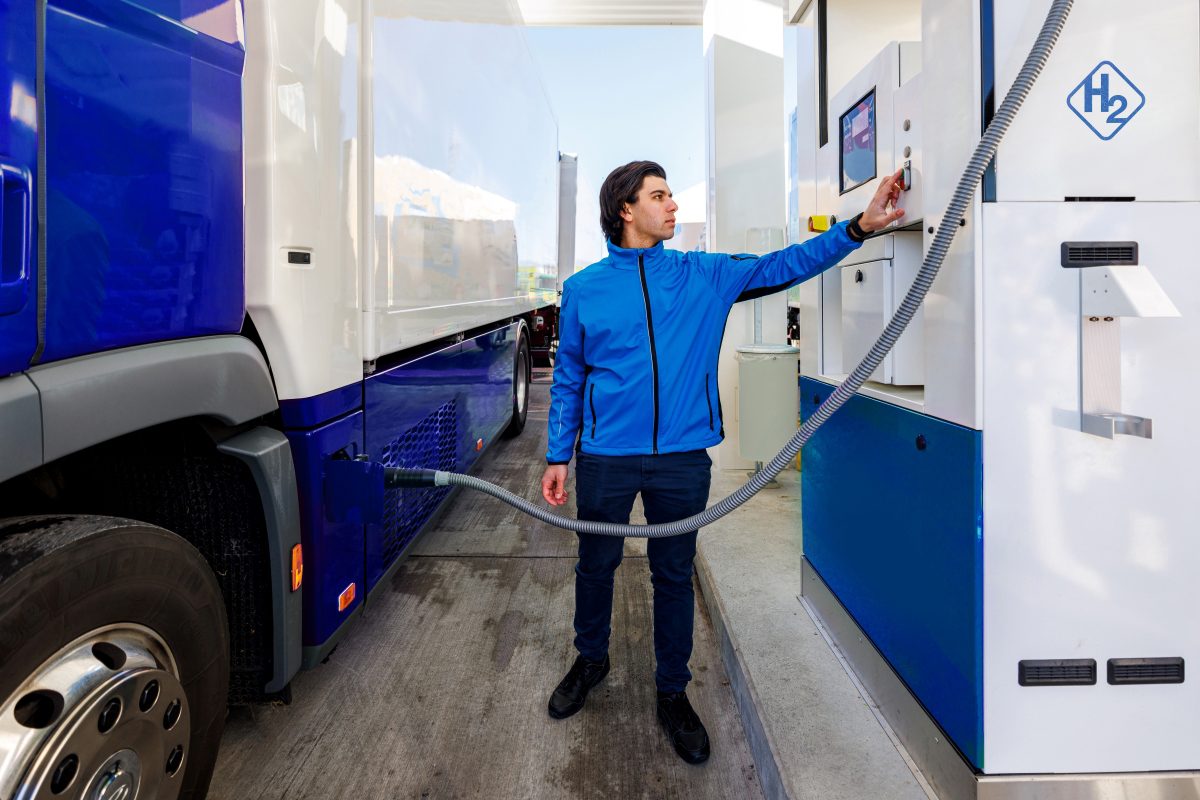Hydrogen holds great promise as a clean, new source of energy and power. It can be used in a variety of applications, from transportation and material handling to stationary, portable, and emergency backup power. But in order for hydrogen to gain real traction in the marketplace and meet its full potential, it’s important the critical fluid systems that handle, transport, store, and dispense the gas are as safe and reliable as possible.
As hydrogen production and deployment ramp up, it can be easy for system designers to rely on institutional knowledge that has been used in traditional oil and gas markets. But properly designed hydrogen systems have some substantially different requirements than oil and gas systems, and it’s important that these requirements are considered.
In this article, we’ll explore what makes hydrogen different from typical gases; how end-use applications differ; and some important system design considerations for hydrogen.
What Makes Hydrogen Different
The first thing to consider when designing hydrogen systems is that hydrogen molecules are extremely small. Hydrogen is the first element in the periodic table, consisting of a single positively charged proton and a single negatively charged electron. It is the lightest and among the smallest of atoms.
Because a hydrogen molecule is so small, it can easily work its way through small crevices. Comparatively, it’s very hard for a large molecule–crude oil, for example—to move through those same gaps. This means that traditional oil and gas system design generally isn’t up to the task of leak-tight hydrogen containment. Seals, materials, and the typical ways in which pipes and tubing are connected in the oil and gas space aren’t capable of safe hydrogen containment.
As a small-molecule gas, hydrogen can also contribute to a unique form of corrosion known as hydrogen embrittlement. Here, embrittlement refers to a reduction in a metal’s ductility and resistance to fracture and fatigue in its service environment compared to its resistance to fracture and fatigue in air and at room temperature. These issues can lead to system failure, resulting in safety risks, increased downtime, and financial loss.
Elsewhere, hydrogen gas must be stored at elevated pressures (1,000 bar or about 15,000 psi in a common transportation application). And as this high-pressure gas is transported from one part of the system to another, pressure changes dramatically, which can create major swings in temperature—far beyond those that are typically experienced in oil and gas applications.
To mitigate the risk factors for unwanted leaks, hydrogen embrittlement, and pressure and temperature concerns, certain material and component considerations must be made for hydrogen systems, which we’ll explore shortly.
End-User Considerations
Aside from the gas pump at your local gas station, most industrial oil and gas systems exist far out of sight of the everyday consumer. These systems are operated and tended to by professionals, often wearing proper personal protective equipment.
But in many instances, the potential for hydrogen as a clean energy source brings hydrogen systems directly into the hands of consumers. Consider transportation applications. A hydrogen fuel cell vehicle will be refueled at a hydrogen station, where a consumer will transport a high-pressure gas into their vehicle through a convenient dispenser. To eliminate consumer safety concerns, hydrogen systems must again be designed with specific use challenges in mind.
System Level Component Considerations for Hydrogen
So, what can be done to ensure the safety, reliability, and efficiency of hydrogen systems? The most important design considerations can be broken down into a few different categories:
Fit-for-purpose materials. Generally, a well-designed hydrogen system should be made from high-quality 316 stainless steel tubing materials, which have demonstrated good performance over lengthy service life.
Specifically, stainless steels containing elevated levels of nickel can deliver optimal performance in hydrogen systems. The American Society for Testing and Materials (ASTM) requires a minimum of 10% nickel in 316 stainless steel formulations, but 316 stainless steel with a minimum of 12% nickel is better for the unique challenges posed by hydrogen. Nickel content helps stabilize the microstructure of stainless steel, enabling it to be more resistant to hydrogen embrittlement.
Optimized components. Components that have been well established in oil and gas applications may not be the best option for hydrogen applications. For example, while traditional cone and thread fittings have been widely used in oil and gas systems, they can be more prone to leaking in a system meant for hydrogen containment. In fact, cone and thread design dates back to the late 1800s—and there are far more modern, higher-performing options available today.
For example, Swagelok’s FK series fittings are engineered specifically for use in hydrogen applications. They maintain ideal pressure ratings of up to 1034 bar, have found use in a wide variety of industries and applications since their introduction, and remain an optimal choice for hydrogen vehicles, infrastructure, and more. Available in high-quality stainless steel material options, they are an ideal design choice.
Elegant design. Because hydrogen can more easily leak through small crevices than other gaseous materials, it can be advantageous to design your hydrogen systems with as few leak points as possible. This means minimizing the number of individual connections throughout the system, utilizing proper tube bending techniques in strategic locations rather than implementing another fitting. A reliable supplier may be able to assist you with design training opportunities.
As the hydrogen industry continues to expand, addressing these system design challenges is critical to the fuel’s widespread adoption as a long-term, sustainable fuel solution. At Swagelok, we’re dedicated to helping clean energy professionals achieve these goals with the right components, services, and support.
About the Author
Chuck Hayes is a 33-year veteran of Swagelok Company, a world leader in the development of fluid system products, assemblies, and services. He has spent the last 25 years developing a wide range of fluid system products and the past 20 years focused exclusively on fitting technology for alternative fuel applications. Chuck currently holds seven patents in the U.S. and numerous patents internationally.



